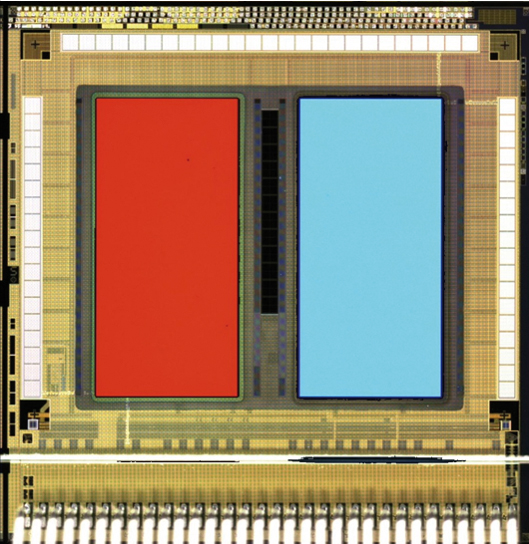Universal Optical Sensor Platform
Fraunhofer IPMS has many years of expertise in the development of organic electronics in combination with CMOS design, user software and electronic control. Using organic light-emitting diodes (OLEDs) and a specially developed CMOS backplane design, a sensor platform for the optical excitation and readout of sensor layers was realized. There are two OLED dots as well as photodiodes and the control and readout electronics for the emission and detection of light on the chips. The emission wavelength of the light-emitting diodes can be set in the visible and adjacent invisible spectral range and thus enables the excitation of different sensor materials for different parameter measurements. By integrating color filters with adapted characteristics depending on the dye in the sensor layer, the sensor chip can be designed for a wide range of applications and combinations with sensor materials and is therefore versatile. The sensor chip has three large photodiode arrays, each of which is covered by a color filter. The sensor layer plays a key role in determining the necessary spectral properties of the color filters and the OLED emission wavelength. For example, the dyes for detecting the pH value and the oxygen concentration have different excitation wavelengths and correspondingly different emission wavelengths. The color filters and excitation OLEDs of the sensor are adapted to the dye and thus enable high compatibility with a large number of sensor layers from commercial manufacturers. This sensor platform is versatile and can also be used without the phosphorescent sensor layers to evaluate single or multi-color periodic light signals over time. The integrated photodiodes and variable filter characteristics enable a wide range of applications for electro-optical measurements, e.g. for measuring oxygen concentration.
 Fraunhofer Institute for Photonic Microsystems
Fraunhofer Institute for Photonic Microsystems